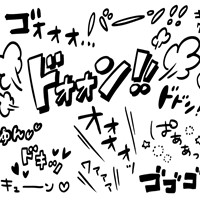Counting in Japanese: Learn with Ease & Efficiency

Counting can become a stumbling block for many people learning Japanese, especially when they discover that counting is much more complex than just ichi, ni, and san. This complexity is because Japanese has a complex set of words, known as "counters," used to count different objects and concepts. But fear not! In this guide, we'll take a closer look at some of the most frequently used counters in Japanese, which will be more than enough to get you through daily life in Japan as you continue to improve your Japanese proficiency.
The Fishy Conundrum of Japanese Grammar
The wide variety of counters makes the concept of Japanese counters confusing for Japanese language learners. This is demonstrated through fish counters. A fish is an individual thing, so having one counter for it makes sense. Actually, there is a range of counters that you can use!
Living fish are referred to with counter 匹 (hiki), while dead fish for trading use the counter 本. If this wasn't confusing enough, a fish with the head and spine already removed uses the counter 丁, a cube-shaped piece of fish meat is ころ (koro), and an even smaller portion of meat is さく(saku). Unfortunately, it doesn't stop there because fish cut to sizes used for sushi and sashimi is 切れ (kire), but fish cut for nigiri sushi is 貫 (kan).
At first glance, this can be incredibly confusing, leaving Japanese learners wondering, "How will I ever learn all the counters?". Luckily, not every example is this confusing, and many common counters can get you through most day-to-day situations.
Counters: What Are They?

Japanese uses counters (josuushi) to indicate the type of object being counted by attaching them to a number. This may initially confuse English speakers, but similar concepts exist in English. Nouns in English often require a counter to be connected. For instance, instead of saying 'one rice,' we say 'one grain of rice' or 'one bowl of rice,' with grain or bowl serving as the counter. Japanese has 500 different counters, ranging from those general object categories to particular items. However, beginners need not learn all 500 counters right away. Certain counters are more prevalent in daily life and useful to learn early on.
Why Counters in Japanese Are So Confusing
Japanese counters can be confusing for several reasons. One of these can be competing meanings. For example, a common beginner word in Japanese is 本 (hon), which means book. However, 本 (hon) is also a counter. Logic would make one assume that it is the counter for books, but instead, it is a counter for long, thin objects. Instead, the counter for books is 冊 (satsu).
Another reason for confusion can be the descriptors used for different counters. As we mentioned, 本 (hon) is a counter for long, thin objects, such as umbrellas, pens, and chopsticks. A sheet of paper is also long and thin, but objects of this shape use the counter 枚 (mai).
On top of this, there are also three counting systems – kango, wago, and gairaigo. In simple terms, kango is the Chinese word for numbers, wagon is the Japanese word, and garage is an English/other language number word. Each counter will require the number to be said in one of these three systems – most commonly kango or wago. You must always use the proper counter in the right counting system, and memorizing this can be an added difficulty when learning all the counters.
How to Use Counters

Using and remembering the different counters can be difficult. Still, starting using them early in your Japanese learning journey is essential. Hence, the patterns start to become easier. If you need clarification, there are some general rules you can use to help you remember what to do. These include:
・Always use a counter after a number. (noun + が(ga)・を(wo) + counter) For example, apple (ringo/りんご )uses the counter 個 (ko). Therefore, for one apple, we could use りんごが1個 (ringo ga ikko).
・Pay attention to the type of object you're counting and use the appropriate counter. This involves looking at the shape and comparing it to other things you know the counter of.
・If you're still unsure which counter to use, just ask! Most Japanese people will be happy to help you out.
The Top 15 Japanese Counters Beginners Should Know
As a learner of Japanese, the following 15 Japanese counters are often considered the most useful. They should be the first ones you learn and use. (At least there are only 15 and not 500!).
| Counter (in Japanese) | Characteristics | Changes in Sound (only 1-10) | Question |
| tsu つ |
Small things, age of children, abstract things can also be counted (but not people or animals). | All counters in this category need to be memorized. | ikutsu (how many?) いくつ |
| nin 人(にん) |
Counting people | Only "ひとり" and "ふたり" use the Japanese counter system. Afterwards, you just add "にん" but for 4 it changes to "よにん". | Nannin (how many people?) 何人 |
| mai 枚(まい) |
Thin objects | None | Nanmai (how many pieces?) 何枚 |
| en 円(えん) |
Money | For 4 it changes to "よえん" | Nanen (how much money?)/Ikura (how much?) 何円 / いくら |
| ban 番(ばん) |
Number (order) | None | Nanban (what number?) 何番 |
| dai 台 (だい) |
Vehicles, electrical appliances | None | Nandai (how many vehicles/appliances?) 何台 |
| do 度 (ど) |
Temperature (e.g., body temperature, weather) | None | Nando (what temperature?) 何度 |
| ko 個 (こ) |
Small things | For 1 it changes to "いっこ", 6 to "ろっこ", 8 to "はっこ" and 10 to "じゅっこ". | Nanko (how many items?) 何個 |
| kai 階/回 (かい) |
Floors (in a building), times/repetitions | For 1 it changes to "いっかい", 6 to "ろっかい", 8 to "はっかい" and 10 to "じゅっかい". For floors, "さんがい" for 3 is also acceptable. | Nankai (what floor?)/Nankai (how many times?) 何階 / 何回 |
| satsu 冊 (さつ) |
Books, notebooks, dictionaries | For 1 it changes to "いっさつ", 8 to "はっさつ" and 10 to "じゅっさつ". | Nansatsu (how many books?) 何冊 |
| sai 歳 (さい) |
Age | For 1 it changes to "いっさい", 8 to "はっさい" and 10 to "じゅっさい". | Nansai (how old?)/ikutsu (how old?) 何歳 / いくつ |
| hon 本 (ほん) |
Long, narrow objects, number of movies, flights, or home runs | For 1, 6, 8, and 10 it changes to "ぽん" and for 3 it changes to "さんぼん". | Nanbon (how many long objects?) 何本 |
| hiki 匹 (ひき) |
Small animals, insects | For 1, 6, 8, and 10 it changes to "ぴき" and for 3 it changes to "さんびき". | Nanbiki (how many small animals?) 何匹 |
| hai 杯 (はい) |
Drinks in a cup/glass | For 1, 6, 8, and 10 it changes to "ぱい" and for 3 it changes to "さんばい". | Nanhai (how many cups/glasses?) 何杯 |
For general counting in Japanese (aside from people, animals, money, and time), the system "~つ" is used. This is also sometimes described as the system for 'things,' with no rhyme or reason. The best way to learn these is simple memorization.
The "~つ" counters can be some of the most useful as they are a great failsafe if you forget the correct counter for an object. Using "~つ" will always be understood by whoever you are talking to, even if it's not quite right.
| 1 | ひとつ (hitotsu) | 6 | むっつ (muttsu) |
| 2 | ふたつ (futatsu) | 7 | ななつ (nanatsu) |
| 3 | みっつ (mittsu) | 8 | やっつ (yattsu) |
| 4 | よっつ (yottsu) | 9 | ここのつ (kokonotsu) |
| 5 | いつつ (itsutsu) | 10 | とお (tō) |
| How many? | いくつ? (ikutsu) |
How to Say Counters

The way you say counters can change depending on the number preceding it. This concept is present throughout much of Japanese, with words changing pronunciation slightly when combined with another word. Here are some examples of counters changing pronunciation:
・For "ko" (small, round objects), you would say "i-kko," "ni-ko," "san-ko," and so on.
・For "hon" (long, thin objects), you would say "ippon," "nihon," "sanbon," etc.
・For "mai" (flat objects), you would say "ichimai," "nimai," "sanmai," etc.
Mastering Japanese Counters: Practice Makes Perfect!
Counters are one of the first significant barriers that many Japanese language learners come up against, and the full extent of counters available can be very intimidating and overwhelming. However, it is essential to remember that every learner has met with the same difficulty. With more practice, it starts to become more accessible and more intuitive. While there are over 500 counters in existence, it is unlikely you will ever need all of them, and the 15 most common counters provided in this article are likely the most useful ones for daily life. And if you make mistakes using counters, don't worry about it - even native Japanese speakers have struggled with this at some point!
Was this guide helpful? If you feel it helped you learn a thing or two about counters, check out our other articles on learning Japanese and other useful language tools for living in Japan!

















